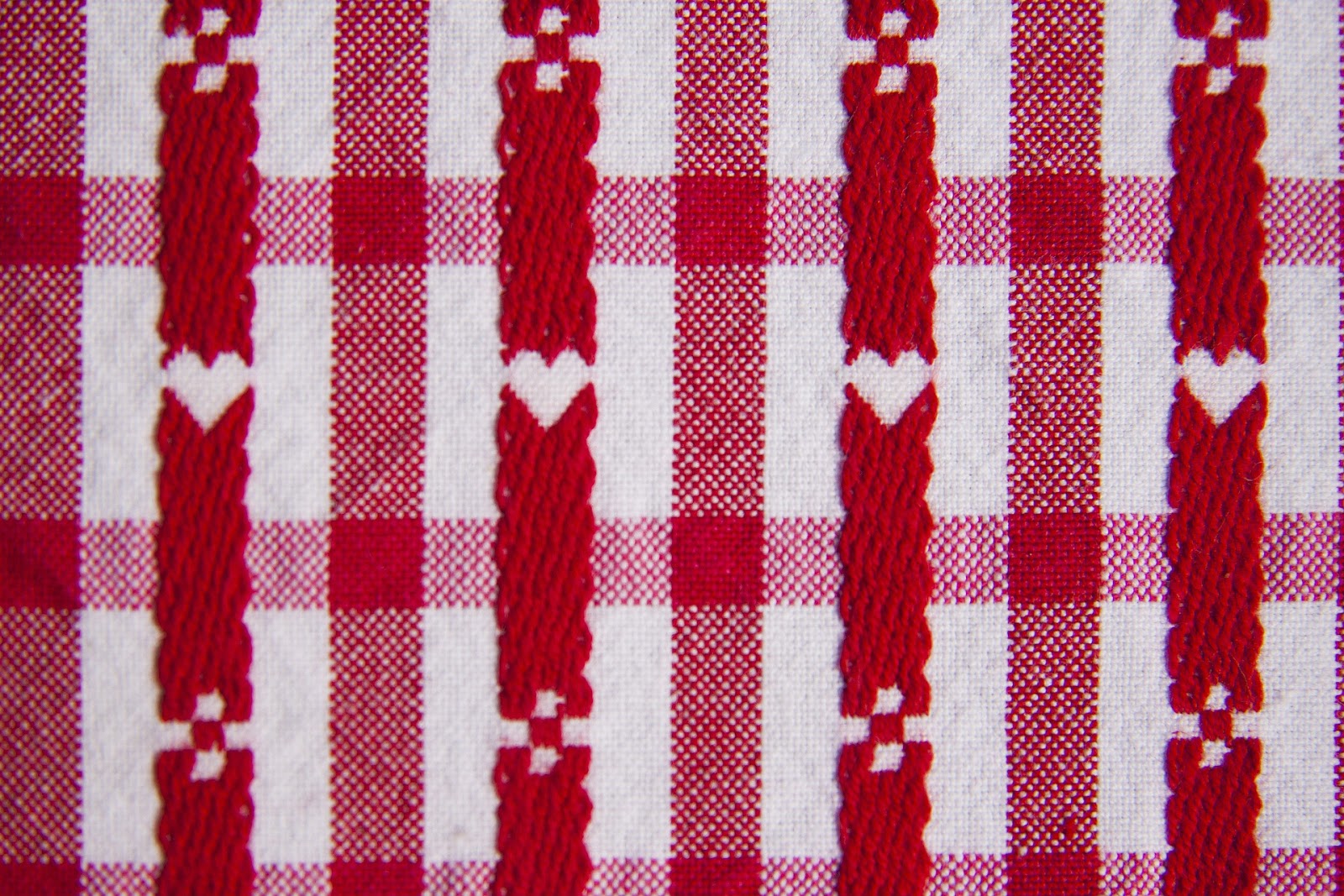Our lives tend to be busy. We have families to take care of, jobs, and responsibilities, and it can seem like moments of rest are rare to none. Especially with the prevalence of technology, life can seem like it’s always moving, and it may be a challenge to find moments to slow down. And, during these busy moments, our mental health can tend to take a back seat.
Hobbies such as embroidering are surprising ways to promote mental health. Research suggests learning to embroider can help us cultivate mindfulness, reduce feelings of stress, relieve feelings of restlessness/tension, calms emotions, and increase happiness and self-awareness. Let’s break down why learning to embroider is good for mental health and how you can get started.
Embroidering Cultivates Mindfulness
Mindfulness is an important aspect of mental health that involves self-awareness. In other words, it requires the ability to know yourself, what you’re feeling, and what you believe about something. Mindfulness can be interrupted by a variety of things. For instance, the stressors of life, feelings of anxiety, negative thinking, overthinking or planning, and not allowing your body to get adequate rest can all result in poor mindfulness.
While it’s not necessarily possible to avoid these stressors as they are a part of life, we can control how we respond and cope with them. Participating in embroidery is shown to boost self-awareness, self-worth, and encourage overall well-being.
According to one study in New Zealand, 650 adults were asked to record their emotions in a journal for two weeks. As part of the experiment, they were asked to record how much time they spent engaging in creative, artistic activities each day and their emotions throughout the day as well. Results show the correlation between crafts and positive emotions and self-worth!
Embroidering Reduces Feelings of Stress and Tension
Occupational therapy has relied on craft classes to help patients with mental disorders for decades. This is largely due to the aspects of crafting that reduce stress and soothe anxiety. Engaging in arts and crafts can even help patients and soldiers with post-traumatic stress disorder.
Embroidery is a great way to reduce stress and anxiety as it is not only relaxing and therapeutic due to the repetition and rhythms, but it can actively reduce our cortisol levels. Cortisol is a hormone in our bodies responsible for the stress signal. It controls things like increased blood pressure when our bodies sense danger and shaking or sweating if we’re nervous.
Too much cortisol can have negative effects on our health and cause weight gain, irritability, lack of sleep, poor mental health, and memory issues. If this stress is unmanaged, it can build up and cause serious health problems. Embroidering can be a great, simple way to release stress and cope with stressful, worry-filled situations.
Luckily, there are many helpful ways to reduce stress and promote relaxation, mental health, and wellness. As you pursue learning to embroider, consider using a stress-relieving hemp extract cream for topical relief that promotes relaxation and calm. You can also try hemp extract gummies or a hemp tincture.
Embroidery Boosts Confidence
Confidence, or self-esteem, is an important factor in mental health and emotional intelligence. It is how you view yourself, your potential, and your abilities. Confidence involves the things you believe about yourself such as how much love and respect you deserve and what you’re capable of.
Confidence fluctuates with the timelines of our lives. While we may feel the most confident during one season, circumstances may change, and our confidence may change with them. It’s important to participate in mindfulness activities and hobbies that cultivate mental health activities like this can also serve to boost confidence! Learning to embroider is a great confidence booster for those of any age!
In addition to this, learning something new boosts confidence by itself! When we learn to master a new skill such as embroidery, we show ourselves that we’re capable of being successful. Learning a new skill can also cultivate a sense of purpose and increase self-esteem!
Embroidery Enhances Creativity
Creativity is the ability to make an object, idea, or work of art with the inspiration around us and imagination in us. Creativity is the basis for much of the world we live in. Innovation, architecture, technology, art, and literature are built upon some person’s or group’s creative thinking!
Studies show being creative can increase life span and quality of life, decrease stress and tension, and improve emotional intelligence skills. Learning to embroider and using it as a creative outlet can increase emotional intelligence and help you understand others better, communicate, and have better friendships.
Embroidery is a simple activity that can boost creativity. You can take your embroidery in any direction you want to. You choose what design, colors, shapes, and theme you want to stitch. Your only limits are the embroidery hoop and the amount of string in your basket!
Embroidery can Boost Cognitive Skills
One of the most known benefits of learning to embroider is its effect on cognitive skills. Not only do the movements of embroidery boost fine motor skills and focus, but studies show engaging in creative hobbies can reduce the risk of being forgetful.
Embroidery can be a social hobby if you join an art class or embroider with friends or at your local senior center. Socialization increases the cognitive benefits of embroidery and can further decrease the risk of developing dementia and other memory problems. Maintaining hobbies is a fun and easy way to take care of your brain as you age, so by pursuing the artistic hobby of learning embroidery, you can boost memory, brain health, and even brush up on social skills.
Embroidery is an Affordable form of Therapy
Finding a therapeutic outlet is essential to dealing with the stress and obstacles that accompany life. Everyone has a different outlet. Some people utilize journaling, music, yoga, meditation, and more to cope with the stresses that life brings.
Many of these therapeutic outlets are expensive, but embroidery is relatively cheap. The cost of materials and supplies to start embroidering will likely be under $20 at your local craft store. Considering the various benefits of embroidering, this price will be worth it.
How to Embroider
There are benefits to learning how to embroider for those of any age and every stage of life. So, here are some tips to help you start embroidering!
Materials Needed
To begin embroidering, there are specific materials and supplies you’ll need. We’ve condensed these supplies into a list for your convenience.
- Embroidery Hoops, come in a variety of shapes and sizes.
- Embroidery cloth, or any linen or cotton cloth.
- Embroidery needles have larger eyes than sewing needles since embroidery threads tend to be thicker than sewing threads.
- An erasable or washable embroidery pencil.
- Embroidery threads are available in a variety of colors so you can pick and choose based on what you want to embroider.
After you collect the materials needed to begin, there are three important steps to embroidering!
1. Sketch a Design
The first step to embroidering (after you attach the cloth to the hoop) is to sketch your design. Pick a design, picture, or pattern you want to make, and use a washable embroidery pencil or marker to draw a rough outline.
Sketching an outline helps you keep track of what you’re doing. There are also some embroidery kits that include pre-drawn designs on them! After you’re finished embroidering, you can run your design under water to wash off any lines that show.
2. Start Stitching
Once you have your design ready, you can begin stitching. Thread your embroidery string through the eye of your needle, tie a knot at the end of the string, and begin on the backside so your knot won’t show.
There are different embroidery stitches you can use, but when you start out, it may be a good idea to keep it simple. Choose a few basic stitches and practice these before jumping to learn more complicated ones.
Next, just keep stitching until you’ve made your design! You can change colors anytime you want by ending on the back of the hoop and tying a knot in your thread. Loop your new color thread through and begin making new stitches.
3. Sew a Back on Your Hoop
When your embroidery hoop is finished, it’s time to sew a back on the hoop. This involves taking a circular piece of cloth or felt roughly the size of the hoop and sewing it onto the back, so you don’t see the knots and string ends.
There are different methods of sewing the back onto the hoop but aim to keep it simple at first. Use a looped stitch or basic stitch to attach the back piece. Tuck in any extra sing when you tie it off.
And voila—you’ve just made your first embroidered masterpiece.
Summary
Whether you’re new to embroidery or are just beginning to learn the art, there are many benefits associated with this hobby. From cultivating mindfulness in the business of life, reducing stress, and promoting memory and brain health to boosting confidence and self-esteem, embroidery can benefit anyone.
Sources:
Mindfulness Exercises | Mayo Clinic.
Mental Health Crafts | Crafts Council
Ways to Be More Self-Aware | HBR
What is Creativity? | Cornerstone.edu














